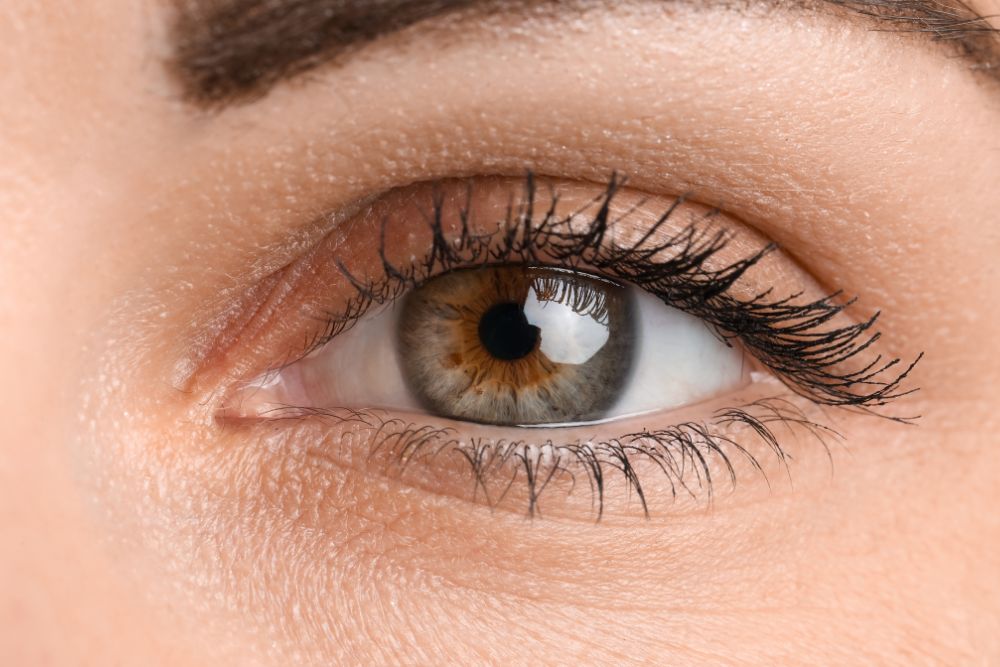Save Your Vision Month: The Top 3 Risk Factors for Retinal Conditions

Various conditions that affect the retina can significantly impact eye and vision health. March is Save Your Vision Month, dedicated to protecting and improving patients’ precious eyesight while educating them about common concerns, particularly for retinal health. To safeguard your vision against retinal disease, it's crucial to be aware of some of the leading risk factors, including aging, underlying conditions, and lifestyle factors. Join us as we explore the top three risk factors for retinal conditions and learn how you can protect your vision for years to come.
Risk Factor #1: Aging
As we age, vision changes are often unavoidable, especially concerning the retina. Aging is associated with several retinal conditions, including:
- Age-related macular degeneration (AMD): AMD is a leading cause of irreversible vision impairment in people aged 50 and older. It affects the macula, the central part of the retina responsible for sharp, straight-ahead vision and close-up activities. There are two types of AMD: wet AMD and dry AMD. The wet form occurs when new, abnormal blood vessels grow beneath the retina which can bleed and/or leak fluid. The dry form arises when deposits called drusen accumulate beneath the retina. An advanced form of the dry type is called geographic atrophy (GA) in which patches of tissue loss occur in the retina. When GA involves the central macula there can be severe vision loss. Treatments exist for the wet form as well for GA, this involves injections of medicine into the eye to help stop the bleeding/leaking of blood vessels in wet AMD or the growth of GA lesions.
- Diabetic retinopathy: The risk of diabetic retinopathy increases with age and the duration of diabetes. The longer you have diabetes and the older you are, the more likely you are to develop diabetic retinopathy or have a more advanced form of the condition. Swelling can occur in the retina from leaky blood vessels called macular edema. New blood vessel growth can also occur which can cause bleeding, retinal detachment or even glaucoma. Diabetic retinopathy is treated with injections of medicine in the eye or with laser therapy.
- Retinal vein occlusion (RVO): This condition occurs when there is a blockage in the veins that carry blood away from the retina. It can lead to vision loss and is more common in older individuals. Swelling in the retina (macular edema) and new blood vessel growth can occur. These are treated with injections of medicine in the eye or laser therapy.
- Retinal tears and detachment: Aging can impact the vitreous, a clear gel that fills the eye, leading to retinal tears and detachment. Over time, the vitreous can liquefy, shrink, and pull away from the retina in a process called posterior vitreous detachment (PVD). As the gel pulls away from the retina, a retinal tear or hole can form. As liquid leaks behind the retina through the hole or tear, it can push it until it detaches, either partially or completely. If a tear or hole is caught early, laser therapy can seal these areas and prevent a retinal detachment from occurring. If a retinal detachment is present, surgery is usually needed. Signs of a retinal tear or detachment include new floaters, flashing lights in your vision or something like a shadow/curtain falling over your vision.
Risk Factor #2: Underlying Conditions
Underlying conditions such as diabetes, hypertension, and autoimmune diseases can significantly increase the risk of developing retinal conditions. For example, diabetes can cause diabetic retinopathy, a condition that damages the blood vessels in the retina and can lead to vision loss if left untreated. Similarly, hypertension can contribute to retinal vein occlusion, where blockages in the retinal veins restrict blood flow and may result in vision impairment. Autoimmune diseases, such as lupus and rheumatoid arthritis, can also affect the retina, leading to conditions like uveitis (inflammation in the eye) or retinal vasculitis (inflammation of the eye’s blood vessels). Managing these underlying conditions through regular monitoring and treatment is crucial in preventing or minimizing any possible harm to your eyes.
Risk Factor #3: Lifestyle Factors
Certain lifestyle choices, such as smoking, a low-nutrient diet, and lack of exercise, can increase the risk of developing retinal conditions. Smoking, in particular, is a significant risk factor for AMD, as it constricts blood vessels and reduces the flow of oxygen and nutrients to the retina. A diet high in saturated fats and processed foods can also contribute to AMD and other retinal conditions by promoting inflammation and oxidative stress in the eye. Additionally, a sedentary lifestyle can lead to obesity and hypertension, both of which are linked to an increased risk of diabetic retinopathy, retinal vein occlusion, and other vascular-related retinal disorders. Adopting a healthy lifestyle, including regular exercise, a balanced diet, and avoiding smoking, can help reduce the risk of developing retinal conditions and preserve vision health.
Save Your Vision by Recognizing the Risk Factors
One of the best ways to save your vision and take control of your retinal health is to recognize the various risk factors and take action. Doing this empowers you to take proactive steps toward protecting your vision for many years to come. If any of these risk factors apply to you, consider scheduling a comprehensive retinal exam as soon as possible. For advanced retinal care in Florida, contact Retina Group of Florida today.

